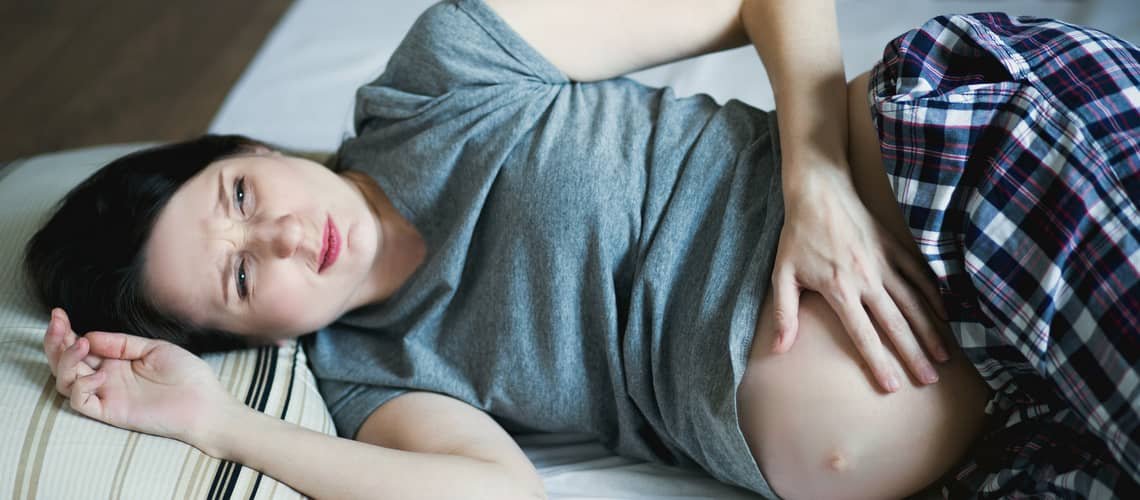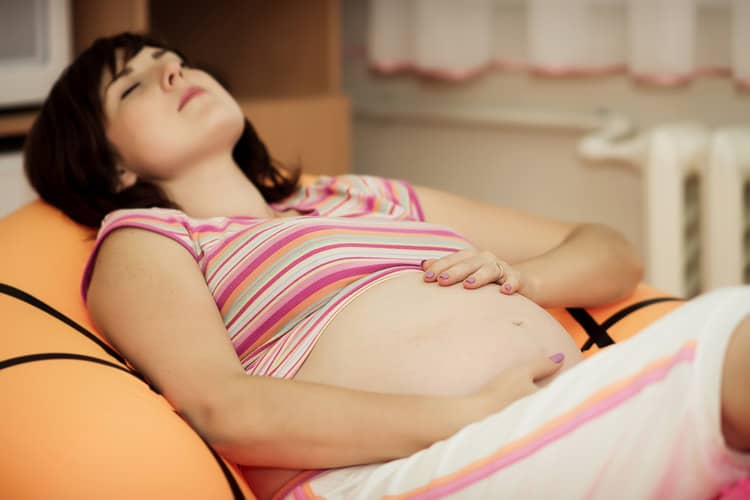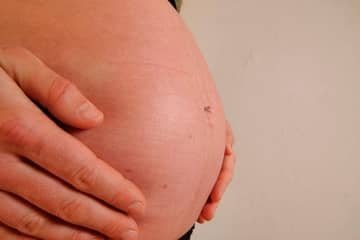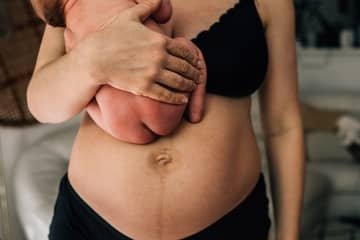
Braxton Hicks contractions before childbirth. How long do false contractions last? All day and all night
Does the label Braxton-Hicks contractions mean something to you in connection with pregnancy? Have you ever heard of Braxton-Hicks contractions? In both cases, these are synonyms and we are talking about false contractions, which tend to appear in pregnant women during the 2nd-3rd trimester of pregnancy. They are also typical for the period 2-3 weeks before childbirth. The paradox is that while some women experience contractions continuously throughout their pregnancy, others do not experience false contractions at all. How do Braxton-Hicks contractions manifest themselves? Do Braxton-Hicks contractions appear before birth? What do irregular contractions all day mean?
During pregnancy, a woman encounters various changes related to her body and organism. A hundred women and a hundred different experiences, that's exactly how they react when they have to describe false contractions. In practice, a woman can experience two types of contractions during pregnancy, the aforementioned false contractions or, subsequently, the most important real contractions - labor contractions. In both cases, these are natural processes that are completely normal during pregnancy. Braxton-Hicks contractions are a very confusing signal especially for first-time mothers and often scare them so much that they immediately seek medical help. Concerns are understandable, especially if a woman does not know what can cause false contractions. How to distinguish real and false contractions? Can Braxton-Hicks contractions last all night and are false contractions painful?
Exercise contractions of the uterus - Braxton-Hicks contractions
Contractions are defined as contractions of the uterine muscles. The uterus itself is a muscular organ that works actively throughout pregnancy. It plays an important role in the development of the fetus and affects the level of hormones in the body. It even increases several times compared to its original size. Its original weight is approximately 50 to 60 g. During pregnancy, the weight reaches 900 to 1,000 g. The internal space of the uterus increases from 5 to 10 ml to almost 5,000 ml. Even outside of pregnancy, changes occur in the uterus, for example during the menstrual cycle. After childbirth and expulsion of the placenta, the uterus wraps up and returns to its original state. Her contractions during pregnancy are also caused by physiological changes (growth).
However, the roles of false contractions are significantly different from those of labor contractions. The main task of Braxton Hicks contractions is a kind of simulation of real contractions, which come immediately before childbirth and are one of the triggers of childbirth. Braxton-Hicks contractions prepare the birth canal for birth. However, their task is not to open the cervix, they only ensure its shortening and softening. Pregnant women can also feel them during increased physical exertion (cleaning, lifting objects) or, for example, after sexual intercourse.

How long before the birth do Braxton-Hicks contractions come?
Braxton-Hicks contractions can appear as early as the 2nd trimester of pregnancy. In some cases, women experienced them continuously since the 20th week of pregnancy. Earlier occurrence is more characteristic in multiparous women. False contractions around 2-3 weeks before delivery are typical. That is why some mothers are surprised by Braxton-Hicks contractions and may get the feeling that these are signs of real contractions.
However, their symptoms are significantly different from real contractions. As mentioned above, some women do not experience them at all during pregnancy (approximately 10% of pregnant women experience them). Their absence definitely does not represent a problem from the point of view of the further course of the pregnancy or the birth itself.
How Braxton Hicks contractions manifest themselves - symptoms
Are they really prenatal contractions? Isn't this a premature birth? Due to the fact that false contractions can appear several weeks before childbirth and many women have no experience with them during pregnancy, it is sometimes difficult for them to distinguish them from real labor contractions. Many pregnant women who feel Braxton-Hicks contractions before giving birth get the feeling that they are real contractions. We have several essential signs for you that should help you determine that these are false contractions - Braxton-Hicks contractions.
- The interval between contractions is irregular, unlike true contractions, which come at approximately the same time interval. This means that false contractions always come at different time intervals.
- The time interval between contractions is not shortened , as it is with true contractions, where the intervals shorten. Therefore, contractions do not come every 15, 10, 8 or 5 minutes. The next contractions of the uterus can come after 3, 5, 20, 40 minutes or after several hours.
- The duration of one contraction varies - usually shorter, 10 to 15 seconds, but the feeling of contractions can last for 1 to 2 minutes. A true contraction lasts approximately 30 to 90 seconds.
- Overall, false contractions can last several hours or days ´´, the reason being the irregularity of these muscle contractions. They usually subside within a few hours and there are usually no more than 4 contractions per hour.
- They can occur at any time during the day or at night - more often they appear in the early evening or during the night after a more active day.
- The pain and intensity of contractions are significantly weaker - women describe them as unpleasant and uncomfortable. Hardening of the abdomen, tension of the front abdominal wall is typical, the pain is rather localized in one place in the lower abdomen and is often characterized as weaker menstrual cramps.
- A woman can breathe, communicate and move calmly during false contractions - the frequency of breathing does not change, the pain is lower.
- It is possible to take advantage of options for their mitigation or complete retreat.
- Postpartums are not accompanied by any other symptoms of termination of pregnancy - outflow of amniotic fluid, loosening of the mucus plug, increased shortness of breath, shooting pain in the thighs or spine.
In connection with the arrival of Braxton Hicks contractions, the influence of physical exertion, lifting objects is often discussed, but sexual intercourse or a woman's orgasm can also contribute to false contractions. In addition to physical activity on this occasion, it is also sperm that contain prostaglandin, which can induce uterine contractions.

Help to stop false contractions
In contrast to true contractions, the advantage is that in the case of Braxton-Hicks contractions, there are methods that can alleviate their manifestations or ensure their retreat. A warm shower or a short bath in warm water can be very helpful. In the case of Braxton-Hicks contractions, this solution should help the uterus to relax and the contractions to subside. It often takes a relaxing position on the left side with bent legs, during which the uterine muscles relax. A glass of lukewarm water and emptying the bladder can also help. Magnesium - magnesium can also provide relief. In general, a regular drinking regimen is important.
Braxton Hicks contractions (false contractions) - experiences
False contractions were perceived differently by women in the discussions. There are also many cases that have had no experience with them, even with multiple pregnancies. Some women, on the other hand, experienced Braxton-Hicks contractions during pregnancy fairly regularly every evening or during the night. Women also report that they felt Braxton-Hicks contractions in an earlier phase of pregnancy, even from the 20th week of pregnancy. However, the typical period was usually a few weeks before the expected date. In terms of pain, mostly women felt weaker pain, which they compared to menstrual cramps. Some in the discussion stated that they felt a strong tension in the abdomen or a relatively long hardening of the abdomen. Some mothers describe that they felt a shooting pain in the area of the lower back. It was mostly true that the duration of the contraction was short.
The most frequent questions - FAQ
For some women, it can be very difficult to distinguish between real and Braxton-Hicks contractions. Do you know what false contractions are? Do you know why they arise and how to distinguish them from real labor contractions? How did you experience Braxton Hicks contractions? We will be happy if you share your experience in the discussion below the article. Were false contractions painful for you? If you have advice and recommendations for other mothers, how to relieve Braxton-Hicks contractions, we would appreciate your comments under the article.
How are Braxton-Hicks contractions manifested?
Can Braxton Hicks contractions last every 5 minutes?
How long before delivery do Braxton-Hicks contractions come?
Are false contractions painful?
Can Braxton Hicks contractions last all day?
Komentáre
Pridať komentár






Guide In English Pornstars english pornstars (washcareer.com)
Odpovedať